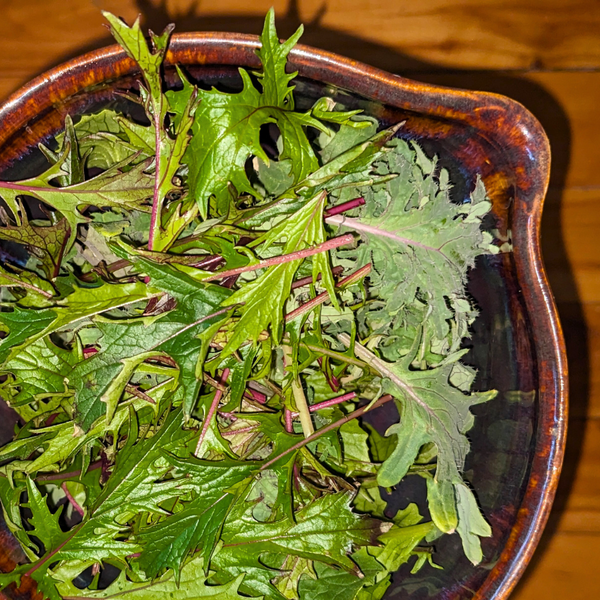Like a lot of gardeners, I really start to miss the garden mid-winter. I miss having fresh foods to pick and add to dinners, and I miss watching veggies grow. So naturally, I bring a bit of the garden indoors.
If you already have a seed starting set-up, it's incredibly easy to convert it for baby greens for the winter. If you don't already have a space dedicated to growing, it's not too hard to establish and the reward of fresh greens all winter make it worthwhile. Here's how I keep the salad greens coming from December to March, until it's time to switch over to starting seeds for spring.
In theory with enough light and space, you can grow just about anything indoors. However, I suggest sticking to baby greens and herbs. If you want to try growing dwarf tomatoes or other fruiting plants indoors, you will need much larger containers for root space, much more frequent feeding, and very strong lights for fruit development.
What you need:
- A full spectrum grow-light
- A fan
- Potting mix
- Planting or seed starting tray
- Mesh tray (optional)
- A water-soluble fertilizer
- Seeds
The fan is essential, adding a fan helps you succeed by strengthening plants, preventing leggy and weak stems, and providing airflow which generally keeps plants healthier.
If you don't have a mesh/drainage planting tray to fill with soil and place inside the watering tray, no worries. If you find a bag of potting mix that fits inside your tray, you can plant directly in the bag. Just shake the bag of potting mix to break up any clumps, and smooth the soil into an even layer. Then, poke or cut some holes for drainage in the bottom side of the bag, place it in the tray, and cut a rectangle out of the top side of the bag leaving enough of an edge to prevent spilling soil.
Don't overthink the light or equipment, use what you have access to. Even a normal white shoplight will provide enough light for baby greens if you place it about 5-8 inches above the plants, you don't need one specifically marketed for growing plants. If you already have a light for starting seeds, use that.
However it does help if your light has a timer built-in. The timer on my grow light is set for 10 hours per day, and the fan runs constantly.

Water the soil thoroughly, and sprinkle your seeds on top. Optionally scatter a thin layer of reserved potting mix on top of the seeds, but it's not strictly necessary. You can crowd seeds much closer together than the packet suggests since you're intending to harvest them young, not grow full heads of lettuce or kale which would require much larger spacing. If you have gaps like I did where less seed germinated, just fill it in later with a few more seeds.
Selecting Seeds
I've had the most success with mustard greens, kales, and romaine lettuce with this method. Since you're harvesting the greens young you don't have to worry so much about bitter flavours or unpleasant textures developing, so any greens seeds you have should work fine. I also take this opportunity to start some more herbs like basil and parsley, then I transplant them to a larger planter in the window to cook with over winter.
Cutleaf Seeds has a few excellent options for baby greens! Red Russian Kale, Mizuna Mustard Greens, Scarlet Frills Mustard Greens, and any of the lettuce seeds are all excellent for baby greens.
Harvesting
This time it took about 20 days from seed until my first harvest. That's pretty quick! The mustard greens matured fastest so this first bowl of salad was largely mustard greens, and the next one contained a lot more kale. Start out by picking/cutting the largest leaves and make sure to leave the base of each little plant intact so it will continue growing. This way you can get many harvests out of your little salad bar.
Feed with a very diluted organic water-soluble fertilizer if you notice any leaves starting to yellow, and they should continue growing new leaves. When watering or feeding, try not to pour any water onto the leaves themselves, only on the soil. This should result in clean baby greens ready for a sandwich or salad.
Are you growing anything indoors this winter? It may be too early to start your tomato seeds for the spring depending where you are, but if you're itching to start some seeds, try some greens!






